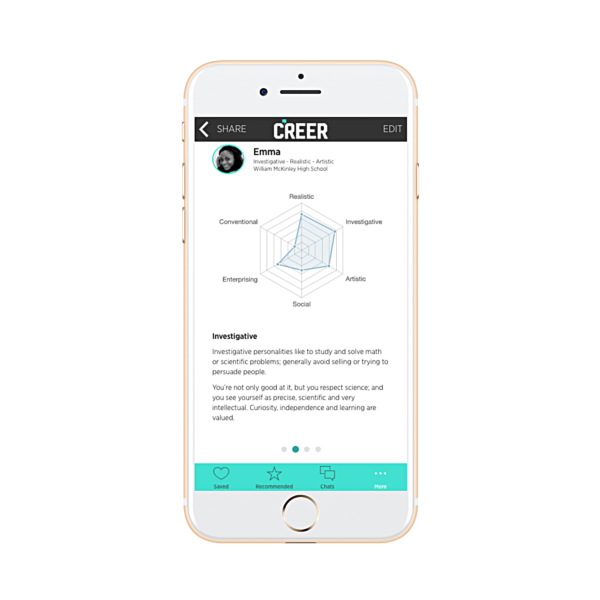
My son was overwhelmed by the college choice portion of life. I suspect anyone who doesn’t miraculously already know where they want to go to college and what they want to study is. One day you are too young to stay home alone, the next day the entire world is asking, “You are grown up! What are you going to do?” These are big questions. It’s a good idea to give them some serious thought.
I let him flounder for a bit, then I sat him down in front of a computer and suggested, “You ask Google where to eat dinner. Maybe the Internet can help with this, too?”
It can. We found many valuable resources and – even better – answers.
What’s Best for Me
What’s Best for Me is like a canned version of the high school college admissions counselor that, unfortunately, not everyone gets access to. It asks a lot of probing questions to help you build an online profile and then invites colleges to come to you.
C’reer App
Each year 50 million Americans research college through the question: What Do I Want To Be When I Grow Up?
Most are teenagers on a cell phone, Googling that question and hoping for a miracle. The free C’reer app wants to change that.
C’reer matches teens you with careers based on their skills and interests, and connects them with colleges via chat. The way it works is, students answer a 3-4 minute vocational assessment to identify interests and strengths. The app recommends the top career paths that match the specific profile. Then, it scours all 5,000 colleges and universities in the United States to match students to colleges with the best track records for graduating professionals into those fields. Once that’s done, teens can chat directly with an admissions rep of a school to answer questions and help with next steps.
ZeeMee
We have all told our kids to clean up their social networks because colleges check them when you apply. ZeeMee takes ‘cleaning’ one step further. It is designed to help Snapchat savvy kids turn those social networking skills into a brilliant power-up to the college application. You use it to tell your own story, via video, to admissions officers. When your story doesn’t translate well into test scores and transcripts – and whose does? – this is how you can put a your own voice into the process.
Khan Academy
Sal Khan is already a favorite teacher in our house. So the Khan Academy free online curriculum on everything you need to know about choosing a major, getting financial aid, picking a college, writing the application essay, and anything else you might want to know about college admissions is the perfect primer to get past overwhelmed.
edX.org
edX is a great place to get a taste for what college is like – by virtually sitting in on a class from a great university. Got some past academic mistakes? Easily fixed by sitting down to a class and bringing those skills up to college standards. And there is a class on the college admissions process that’s taught by college counselors. All free.
Chegg.com
Chegg is must-visit on the journey to college. It hosts a wealth of resources. Among them, access to real, live college admission counselors for a fraction of what you would pay in the real world. (Just search for College Counselor in the “Tutors” section.) And these counselors are vetted by Chegg. That’s way better than listening to your know-it-all neighbor who happened to go to college. Better still, you will have someone to come back to for help with the essay or other questions that come up along the way.
Cappex.com
We get pelted with marketing information from colleges. But at this site? Tons of campus reviews by students who’ve been to the schools. And, to keep it real, you can calculate your chances of getting into a school by adding academic details to your profile. Also? This is a great place to track down little-known scholarships.
Parchment.com
Parchment offers a quick reality check. Plug in the high school you attended and your grades and it calculates your chances of getting into a specific college. (It will also get your transcripts and send them to the colleges you apply to.) Cole fully expected total rejection. So when he learned he has a 75% chance of getting into one of his top pick schools and a 100 percent chance of being accepted by at least one school on his list? Let’s just say there was significantly less floundering.
